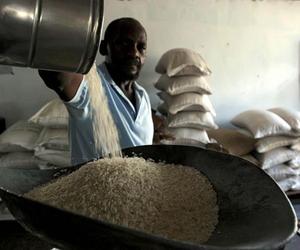Importance of import substitution in the current Cuban economy
- Submitted by: Luis Manuel Mazorra
- Business and Economy
- 04 / 01 / 2012

Import substitution is a priority of the current Cuban economy due to changes taking place on the island and the prevailing global crisis. This task involves many centers of production of goods and services in the country that should know the importance of increasing domestic production.
For much of the population, and even many of the laboring themselves involved in the task, this is hard of macroeconomics and not really be felt.
Of course not, and the product of import substitution rejoins society by numerous pathways.
In short, import substitution is any production of material goods or services made nationally to avoid resorting to the international market to buy, which would mean fresh foreign expenditures or appeal to credit.
The following is an example of import substitution of dozens that could be cited, and what you can pose to the population.
Until mid-March, the four sugar mills participating in the harvest in the province of Camaguey were transferred to the national grid, generation of its turbines, seven thousand 351 megawatt-hours.
This contribution, which like all of that energy production is achieved using the crushed cane bagasse as fuel in the furnaces of steam boilers, equivalent to six thousand 557 tons of fuel oil.
Then, this action by itself is not as import substitution involves spending a thermal oil, given that most of the fuel used in Cuba is imported.
A fuel oil prices at the time, the cogeneration of the sugar Camaguey means that to date the country ceased to dispense a little more than four million 222 thousand U.S. dollars.
Now, how is expressed in daily life such savings?
Considering the average electricity consumption of 200 kilowatt-hours per household per month, the transfer of energy to the grid meant that 36 000 755 houses used for a month the current generated in the mills.
You can also ask what the money saved could be used in response to food prices, by the way higher and higher, usually matters Cuba?
With four million 222 thousand U.S. dollars could buy the country-including the price of the product, freight to national port and insurance-thousand 042 tonnes of milk powder, which after processing industry become about 11 million bottles of milk 363 fluid.
Or seven thousand 878 tonnes of rice, carrying this amount to the family budget to five pounds sold every Cuban subsidized monthly benefit involves a year of 288 thousand 860 people, most of the population of a city like Santa Clara, capital of the province of Villa Clara.
Another example can be purchased three thousand 280 tons of chicken into quarters, 12 000 528 of wheat to make bread and pastries, four thousand 923 of 272 three thousand beans or soybean oil.
And if you follow the chain may say, Cuba has the potential to replace imports when it produces more rice, milk, beans and more.
Many advantages for the mere fact that only four harvest in central Camagüey provide electricity to the utility gained from sugarcane bagasse! It is therefore appropriate to look good doing what it's up to everyone to give their benefit, and if not go with it, demand it.
Comments